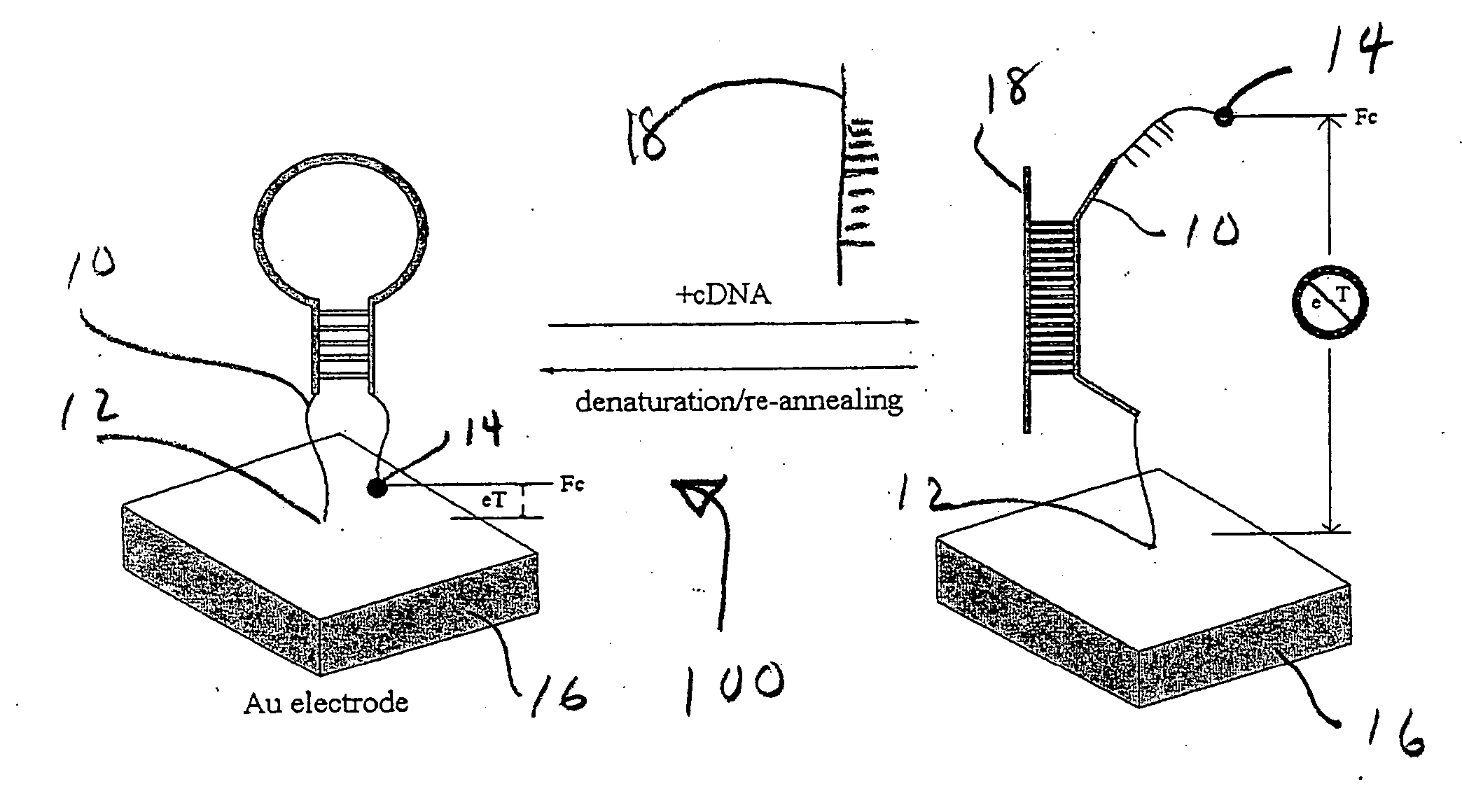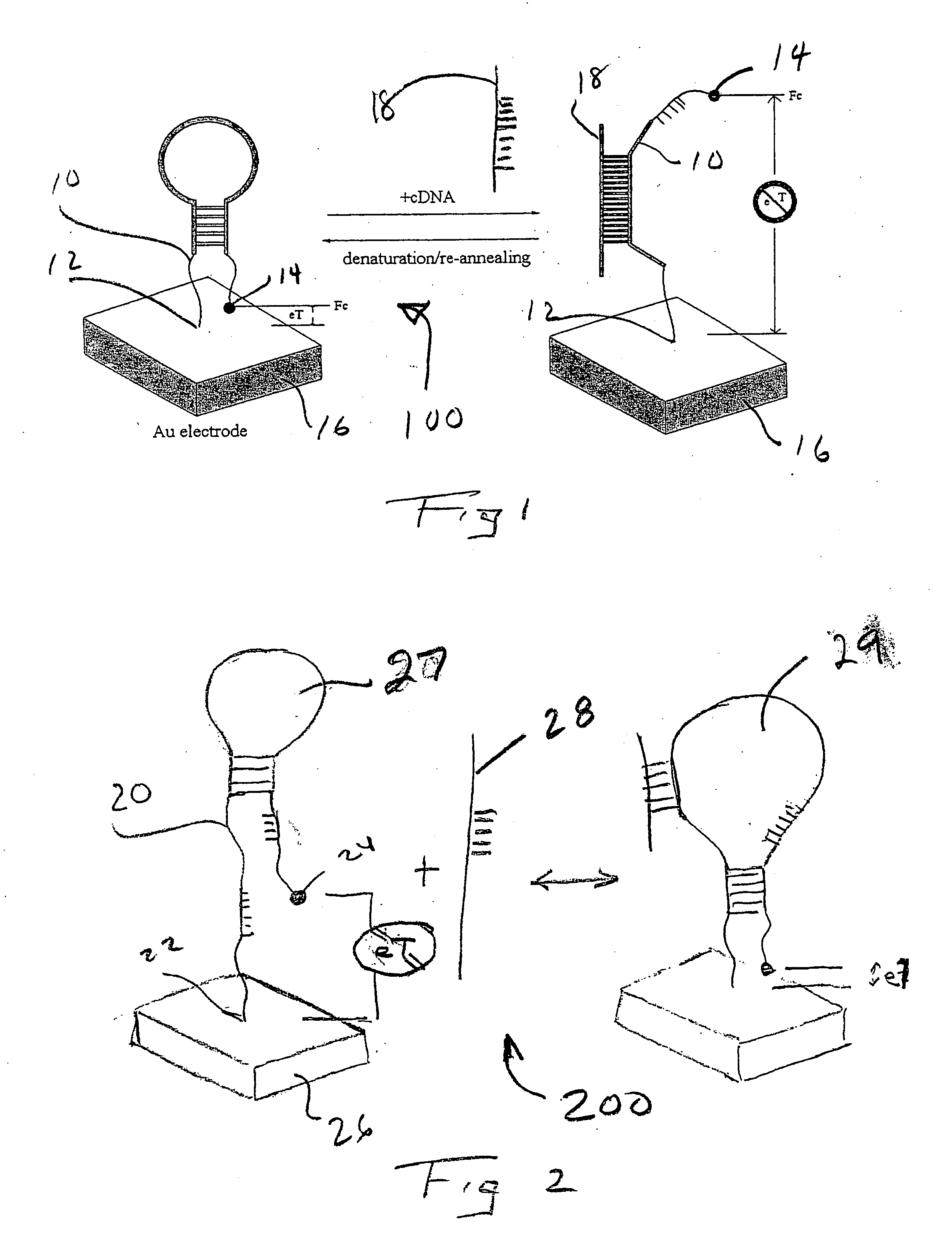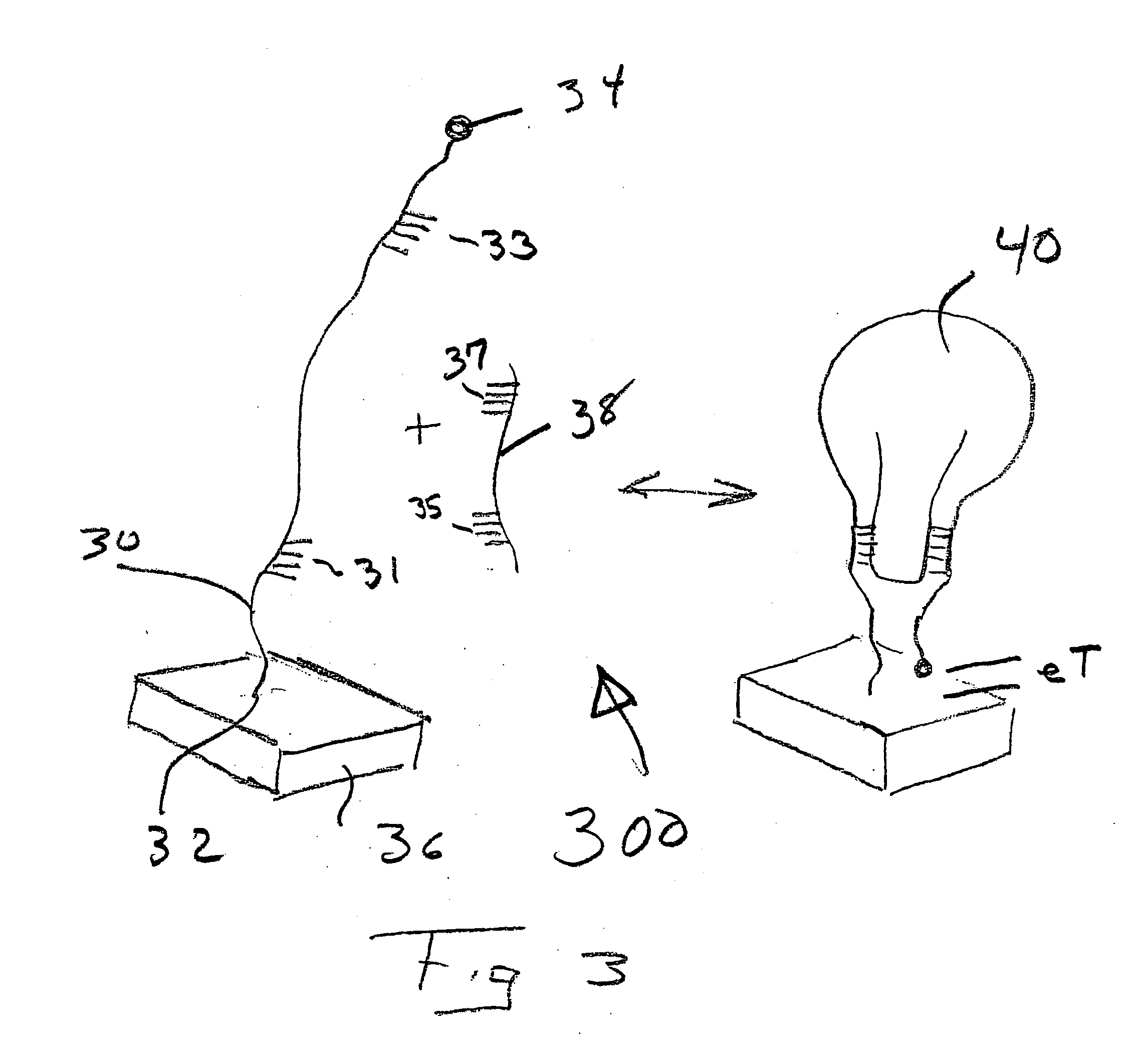Reagentless, reusable bioelectronic detectors and their use as authentication devices
- Summary
- Abstract
- Description
- Claims
- Application Information
AI Technical Summary
Benefits of technology
Problems solved by technology
Method used
Image
Examples
embodiment 100
[0046] In the embodiment 100 described in FIG. 1, the E-DNA sensor suffers from being a "signal-off" sensor. That is, in response to its target, the electrochemical signal is abolished. This renders that embodiment of the E-DNA detector vulnerable to false positives arising via disruption of the stem-loop sensor element by environmental conditions or physical degradation (e.g. by nucleases). As shown in FIG. 2 with the appropriate oligonucleotide design "signal-on" E-DNA-type sensors 200 can be engineered, thus silencing false positives arising due to chemical or enzymatic destruction of the sensor element. The appropriate structure contains an appropriate DNA oligonucleotide probe 20 attached to or adjacent to electrode 26 at end 22. The other end of probe 20 carriers a redoxable moiety 24. In one configuration, probe 20 contains a moderate length hairpin 27 that positions the electroactive label 24 away from the electrode 26. That hairpin configuration 27 thermodynamically compete...
example 1
Fabrication of the Stem-Loop DNA Structure
[0087] Ferrocene carboxylic acid was purchased from Aldrich (Milwaukee, Wis.), 1-Ethyl-3-(3-dimethylaminopropyl)-carbodiimide (EDC) and N-hydrosuccinimide ester (NHS) were obtained from Sigma (Milwaukee, Wis.). Ferrocene succinimide ester (Fc-NHS) was prepared as described in the literature [Takenaka, S., Uto, Y., Kondo, H., Ihara, T. & Takagi, M. Anal. Biochem. 218, 436. (1994)] and confirmed by .sup.1H NMR. Oligonucleotides were obtained from Synthegen (Houston Tex.). The sensor oligonucleotide, sequence 5'-NH.sub.2--(CH.sub.2).sub.6-GCGAG GTA AAA CGA CGG CCA GT CTCGC-(CH.sub.2).sub.6--SH-3' (oligo 1), contained a 5' hexamethylene amine and a 3'hexamethylene thiol group . Fc-NHS was dissolved in a small volume of dimethyl sulfoxide and then diluted in a 0.1 M Na.sub.2CO.sub.3 buffer (pH 8.5) containing 0.1 mM of oligo 1. This mixture was stirred overnight at room temperature. The final product (oligo 1-Fc) was purified by HPLC on a C18 col...
example 2
Preparation of the Functionalized Au Electrode
[0088] [ ] Polycrystalline Au disks (1.6 mm diameter) (BAS Inc., West Lafayette, Ind.) were used as working electrodes. The protocol for gold electrode preparation has been previously described [Fan, C., Gillespie, B., Wang, G., Heeger, A. J. & Plaxco, K. W., J. Phys. Chem. (B) 106, 11375-11383 (2002)]. The cleaned Au electrode was rinsed, dried under argon and then immediately incubated overnight in 1 M oligo 1-Fc, 10 mM phosphate buffer with 0.1 M NaCl, pH 7.4. Prior to use, the oligo 1-Fc was pre-treated with tris-(2-carboxyethyl)phosphine to break the disulfide bond and then purified by spin column. The modified electrode was washed with water, dried under argon and incubated in 1 M NaClO.sub.4 solution prior to use.
[0089] The gold surface was then functionalized by oligo 1 (see Example 1) through the well-established Au-S chemistry of self-assembly. Previous studies have demonstrated that this self-assembly process is only feasible ...
PUM
| Property | Measurement | Unit |
|---|---|---|
| Length | aaaaa | aaaaa |
| Distance | aaaaa | aaaaa |
Abstract
Description
Claims
Application Information
 Login to View More
Login to View More - R&D
- Intellectual Property
- Life Sciences
- Materials
- Tech Scout
- Unparalleled Data Quality
- Higher Quality Content
- 60% Fewer Hallucinations
Browse by: Latest US Patents, China's latest patents, Technical Efficacy Thesaurus, Application Domain, Technology Topic, Popular Technical Reports.
© 2025 PatSnap. All rights reserved.Legal|Privacy policy|Modern Slavery Act Transparency Statement|Sitemap|About US| Contact US: help@patsnap.com



